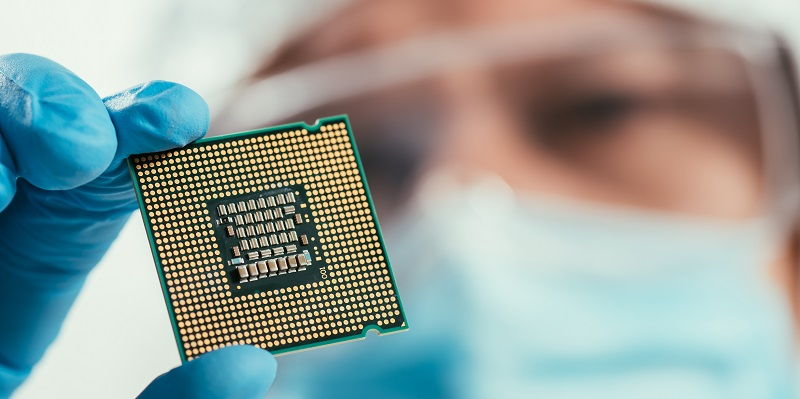In today’s digital age, data centers play a critical role in powering our interconnected world. However, these centers are notorious for their high energy consumption, with cooling equipment alone accounting for nearly 30% of total power usage. Within these data centers, microchips are major energy-consuming components, with their cooling alone contributing up to 40% of the center’s overall energy usage. Addressing this challenge head-on, the U.S. Department of Energy (DOE) launched the Advanced Research Projects Agency-Energy (ARPA-E) COOLERCHIPS program, focused on optimizing cooling operations for significant improvements in energy efficiency. Among the pioneering institutions involved, Purdue University stands at the forefront, spearheading innovative chip cooling solutions through its groundbreaking research.
Importance of Chip Cooling in Data Centers
Microchips, the powerhouses of data centers, generate immense heat due to their intensive computational activities. To prevent overheating and ensure optimal performance and longevity, efficient and effective cooling systems are indispensable. Cooling microchips is crucial as they account for a substantial portion of data center energy consumption, with statistics indicating up to 40% of overall usage. Thus, finding sustainable, energy-efficient solutions to cool microchips efficiently is imperative to tackle the energy consumption challenge present in data centers.
Comparison of Conventional Air Cooling vs. Microchip Cooling
While conventional air cooling methods have been prevalent in data centers, they tend to cool the entire server rack rather than focusing on the chip itself. In contrast, microchip cooling directly addresses the source of heat, precisely targeting the chip and achieving faster cooling with significantly less energy consumption. By shifting the focus to chip-level cooling, Purdue University’s research aims to revolutionize the way we cool microchips in data centers. Such an approach yields unprecedented opportunities for energy efficiency and sustainable operations.
Introduction to the COOLERCHIPS Program by the DOE
To propel the development of innovative chip cooling methodologies, the DOE initiated the COOLERCHIPS program. This program serves as a catalyst for groundbreaking research, providing funding and support to institutions dedicated to finding energy-efficient solutions. Purdue University, recognized for its expertise in engineering and technology, received a substantial $1.8 million grant under the COOLERCHIPS program. This recognition underscores Purdue’s leadership role in driving progress within the field of chip cooling.
Purdue University’s Role in COOLERCHIPS Program
With the prestigious grant from the COOLERCHIPS program, Purdue University is at the forefront of unlocking novel chip cooling solutions. Leveraging its extensive research capabilities, the university is exploring innovative approaches that promise to redefine the cooling landscape in data centers. By pushing the boundaries of knowledge and fostering collaboration, Purdue aims to develop sustainable chip cooling systems that reduce energy consumption, improve reliability, and enhance overall carbon efficiency in data centers.
Two-Phase Jet Impingement Cooling
Purdue University’s pioneering research in chip cooling encompasses the concept of two-phase jet impingement cooling. This cutting-edge approach leverages microchannels filled with liquid, which are deliberately integrated directly within the microchip packaging. Unlike traditional cooling methods that rely on bulk flow mechanisms, two-phase jet impingement cooling provides more efficient and targeted cooling at the microchip level. By precisely directing the cooling liquid, researchers can maximize the dissipation of heat, thereby enhancing overall system performance and reducing energy waste.
Elimination of Thermal Interface Materials
Innovatively, Purdue’s chip cooling solution eliminates the need for thermal interface materials, which are traditionally employed to improve heat dissipation between the microchip and the cooling system. The direct liquid contact achieved in the two-phase jet impingement cooling approach eliminates the interfacial thermal resistance, maximizing heat transfer efficiency. This breakthrough not only simplifies the cooling system but also reduces manufacturing costs and enhances reliability.
Gravity-Driven Cooling System
To further optimize energy consumption, Purdue University has adopted a gravity-driven cooling system. By harnessing the natural power of gravity, the condenser, a vital component in the cooling process, is strategically positioned at a higher level. This configuration allows the liquid to flow effortlessly into the chips, requiring minimal additional power input. Through this innovation, Purdue aims to significantly minimize power consumption, making chip cooling operations more energy-efficient and sustainable.
Inadequacy of Traditional Cooling Methods
As the demand for high-performance microchips skyrockets, conventional cooling methods employed in data centers are no longer adequate. Cooling at the room level or employing air cooling techniques fail to meet the specific cooling requirements of advanced microchips. Without effective chip-level cooling measures, data centers risk compromising performance, increasing energy consumption, and facing reliability issues. Recognizing this challenge, Purdue University’s research aligns perfectly with the goals of the COOLERCHIPS program, aiming to provide practical, efficient, and sustainable cooling solutions tailored to the needs of modern microchips.
As the demand for data centers continues to grow, so does the critical need for energy-efficient chip cooling solutions. Acknowledging the significant role played by cooling in overall power consumption, Purdue University’s groundbreaking research, supported by the COOLERCHIPS program, pioneers innovative chip cooling methodologies. Through the integration of two-phase jet impingement cooling, direct liquid contact, and gravity-driven systems, Purdue aims to revolutionize chip cooling, simultaneously optimizing energy consumption and enhancing data center performance and reliability. By providing a sustainable path forward for chip cooling, Purdue University’s research sets a new standard for energy-efficient operation in data centers and drives us closer to a greener and more reliable digital future.

